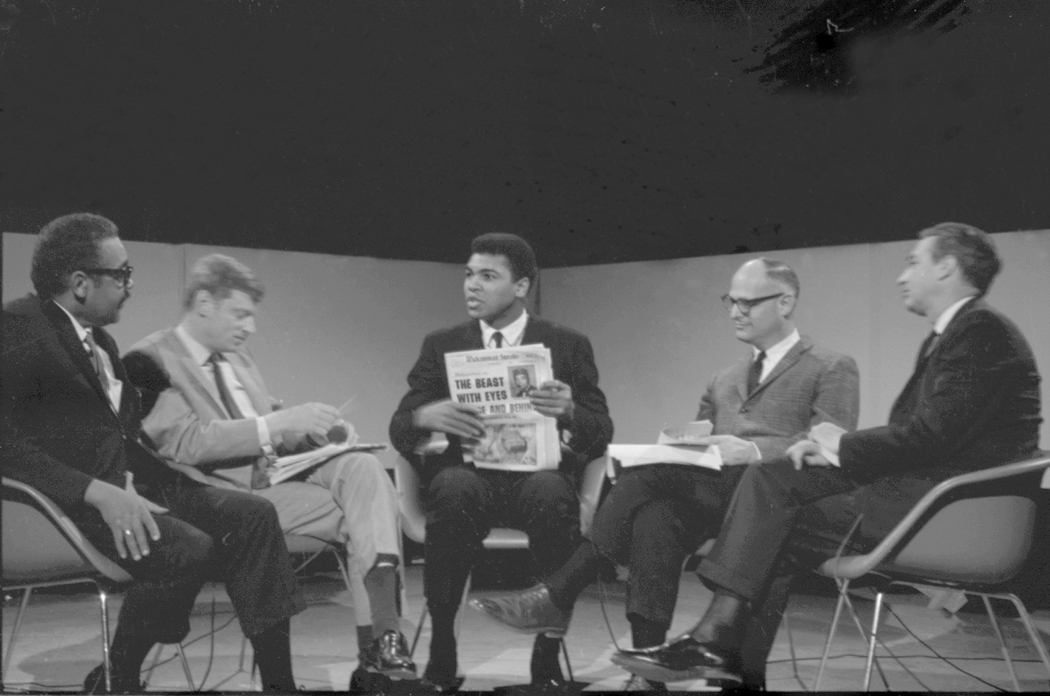
MUHAMMAD ALI APPEARS ON A CHANNEL 9 INTERVIEW STAGED AT CHANNEL 24's STUDIO
FIRE DRILL
WNYS-TV, Channel 9, was the ABC affiliate with studios in the Shoppingtown mall, in DeWitt. One morning in 1967 a fire broke out in the station’s paint room destroying the studio and engineering. WCNY’s Barron learned of the situation and immediately made an offer to Channel 9: Come over to Channel 24 and share facilities.

MUHAMMAD ALI APPEARS ON A CHANNEL 9 INTERVIEW STAGED AT CHANNEL 24's
STUDIO
“To think that Channel 24 would let Channel 9 come in there and disrupt their operations was really amazing to me,” states former WNYS/WCNY director Larry Wood. “Paul Barron knew that there were two microwave links from Channel 24’s studio to the transmitter in Pompey, which sat a few yards away from Channel 9’s transmitter. Paul gave one link over to Channel 9 and coaxial cables were run from WCNY’s transmitter building across the ground to the WNYS transmitter building. By 4:30 pm that afternoon WNYS was back on the air! Meanwhile, Channel 9 employees were driving boxes of film and tape from DeWitt over to Liverpool to keep the local programs and commercials going. AT & T re-routed the ABC network signal over to Channel 24 a couple of days later. We ended up doing live shows from Channel 24’s studio. I recall sitting side-by-side with WCNY director Art Irons at the same switcher, with me directing the news on Channel 9 and Art switching station breaks on Channel 24. There was only one studio, of course, so there could be only one live show at a time. Art would select from the preview bank of the switcher which was routed separately to Channel 24, and I would be reaching over his hands and selecting cameras, film playbacks and commercials for the Channel 9 newscast from the program bank. The cooperation we got between the Channel 24 and Channel 9 folks was incredible.”
FILM NOIR
Wood was soon recruited by Channel 24’s Harry Cunningham for the production of several 16mm documentaries. “Harry convinced Channel 24 that it would be cheaper to put me on staff than to keep buying my product,” relates Wood. “The job title they gave me (instead of the money I asked for) was ‘Producer/Director of Contract Motion Picture Films.’ You know that old saying, ‘the longer the title the shorter the salary.’”
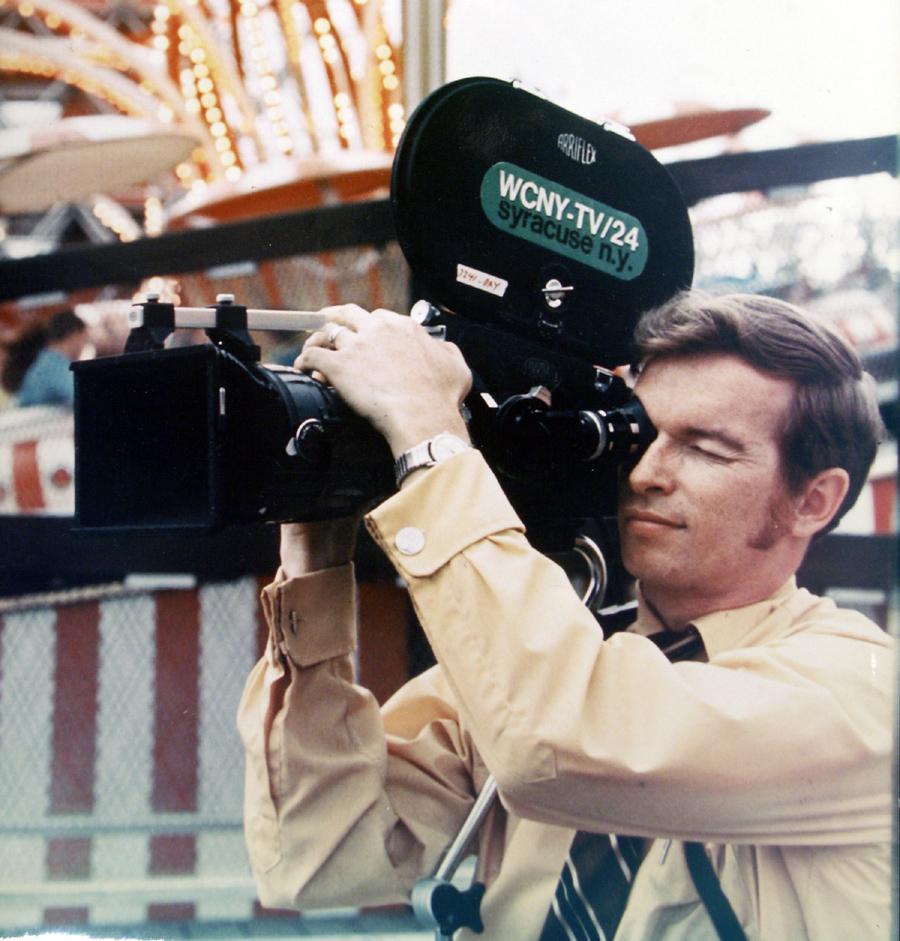
CINEMATOGRAPHER LARRY WOOD WITH WCNY's ARRIFLEX CAMERA
Wood regrets that budgets forced him to use black-and-white film on such colorful subjects as molten steel processes and the Montreal-based “Man and His World,” (formerly Expo ’67). One of his memorable experiences was filming a major documentary on the Erie Canal, The Ditch that Helped Build America, which was premiered at the Loews Theater as a fundraiser.
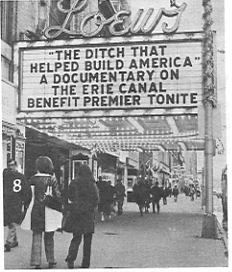
The station, however, missed an opportunity to cover the Woodstock event in 1969, although Wood had expressed an interest in going.
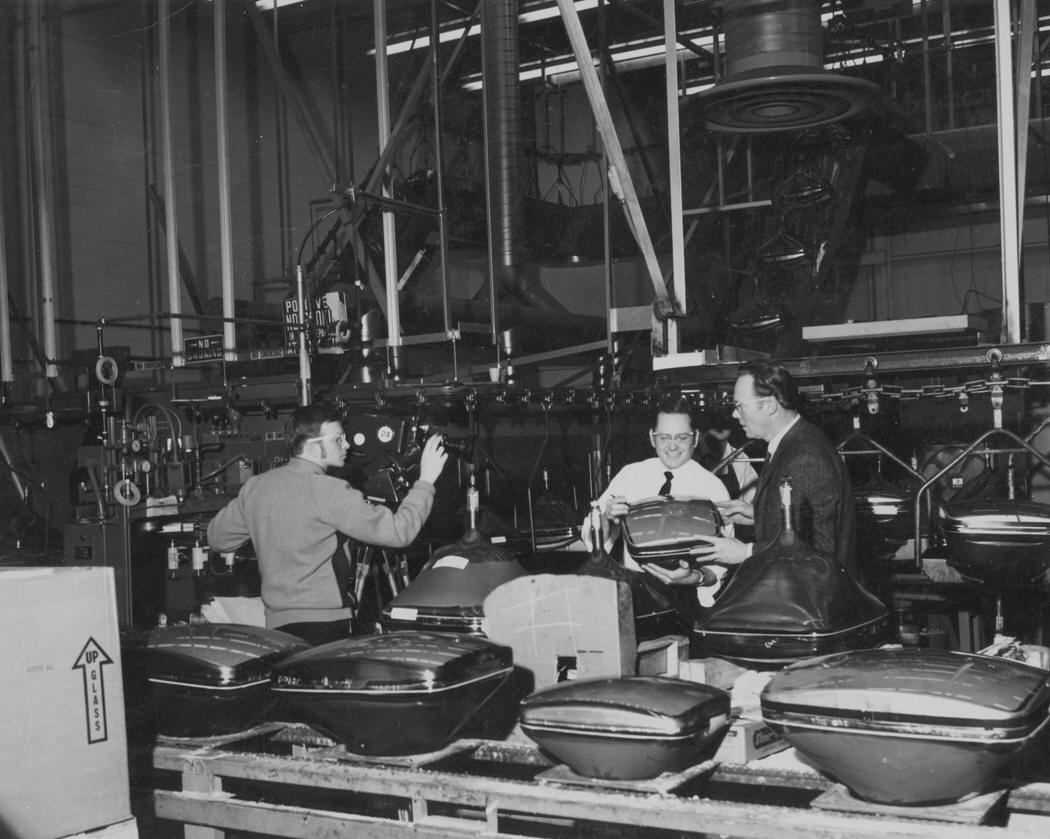
FILMING CORPORATE COMMUNITY AT THE G.E. TELEVISION PLANT IN SYRACUSE
| Wood’s talents with the station’s new
Arriflex 16mm camera (with 10X1 zoom!) were utilized on programs such as the
monthly Corporate Community. “We would show how local businesses worked,”
says Wood, “…and in those days Syracuse had some pretty heavy hitters like
Crucible Steel, the Nettleton Shoe Factory and Syracuse China.” The angles
that were required to capture some of the industrial processes left Wood hanging
from high perches with his assistant, Jim Underwood, providing a safety harness by
maintaining a grip on
Wood’s belt.
Right - Larry Wood and Harry Cunningham shoot a high angle vista |
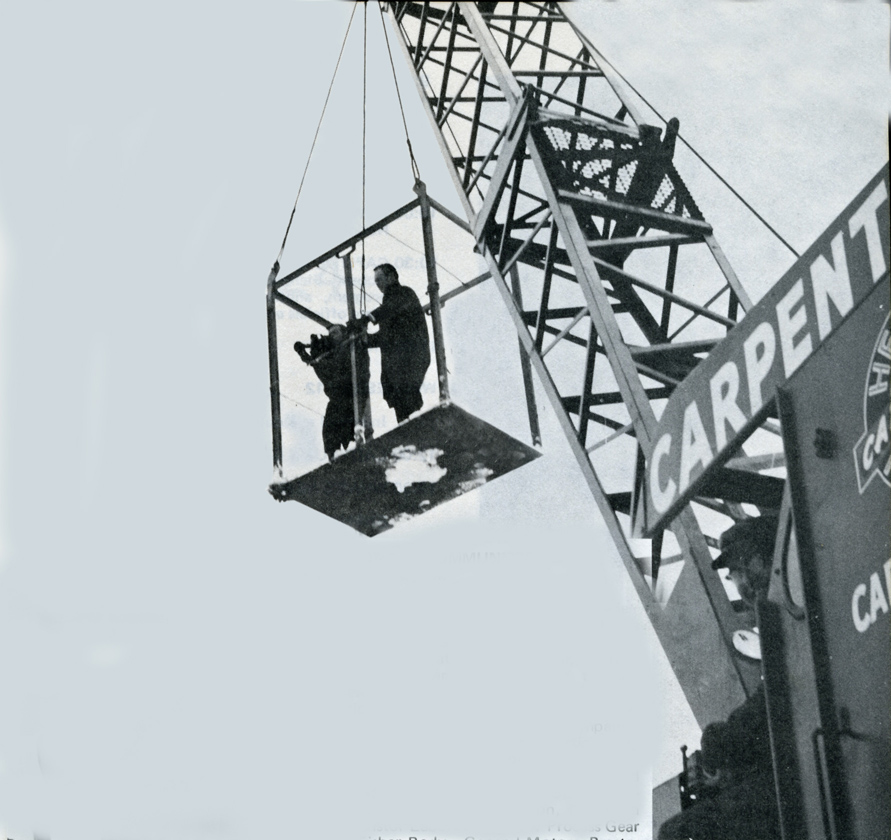 |
OUT OF COLD WATER AND INTO HOT WATER
| But Wood’s most ambitious and difficult shot also
put his job in jeopardy: “We went to shoot some Niagara-Mohawk
hydro-electric plants up in the Adirondacks,” recalls the
filmmaker. I wanted to get a shot from a rock in the middle of a
fast moving river, and carrying the camera out there was a scary
moment because this was the station’s new and expensive Arri BL
16mm camera…the latest available at the time. If I had dropped that
camera in the river, my job would have gone down with it!” Right - Wood risking his safety and his job on assignment in the Adirondacks |
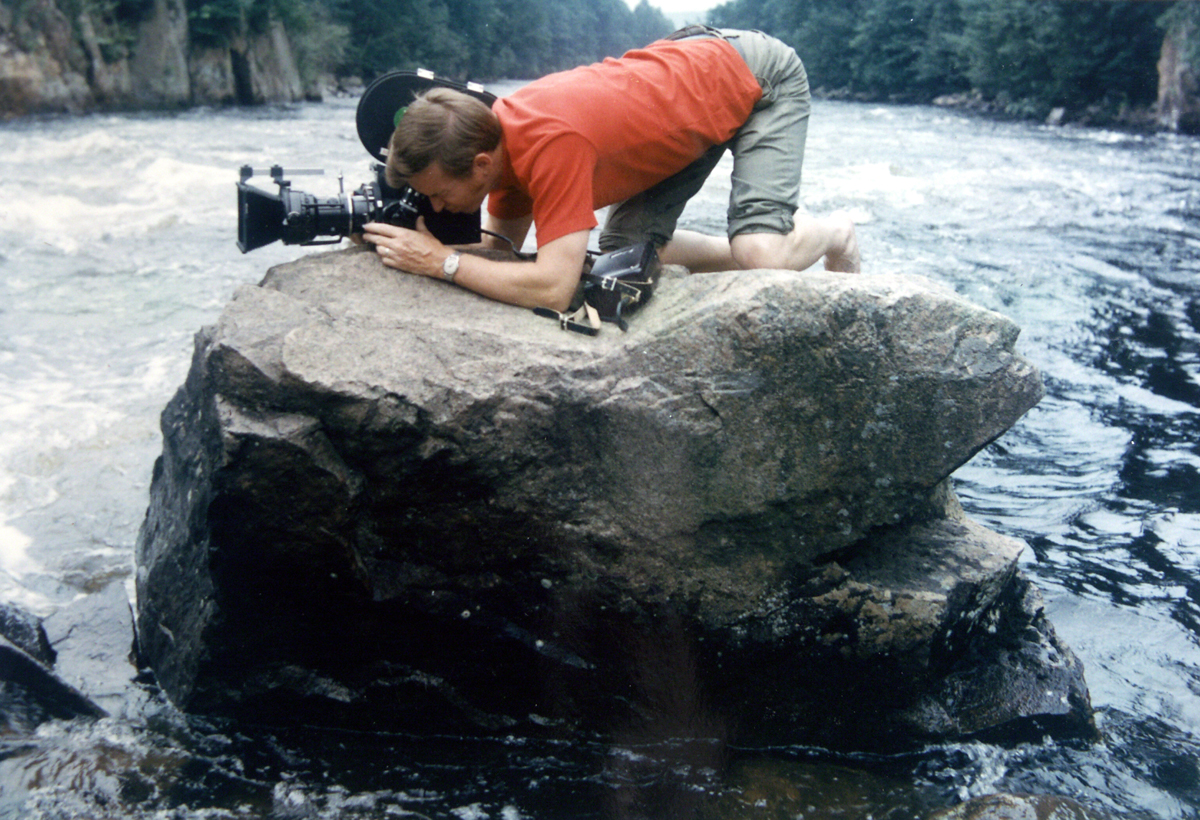 |
Wood and Underwood managed to extend their stay for a little recreation at station expense. “I told Jim to bring his fishing gear, then after we got all the shots we needed in the can I called the station and said ‘We’re going to have to spend an extra two days because we got rained out.’ I realized that if they looked at the state weather forecast they’d know I was lying! But we got away with it.”
Controversy is something that most commercial stations try to avoid. Channel 24 was not beholden to commercial interests and could explore avenues avoided by the VHF channels. ETV programming often resulted in bold, challenging documentaries that raised hackles with conservative viewers. “We did a 90 minute documentary called The Heartland, about teenagers being raised on the farm,” explains Wood. “Many of the teens growing up on the farm learned about sex by watching farm animals. I had a shot of a bull mating with a cow and the question was whether to use this graphic shot in the final film. I didn’t pull any punches with the angle of the cow and the bull. Management was leaning towards not using the shot but I left it in the final edit and there was some hell to pay for it later. In today’s world, it wouldn’t cause much of a reaction.”
A hidden-camera documentary led to some uncomfortable moments for Wood’s cast and crew. “We were doing a show about how people react to certain situations,” recalls Wood. “We set up a fake purse-snatching at the mall to see what people would do. An intern played the crook and this pretty girl would be the victim. The purse is snatched and the girl screams ‘help, he got my purse!’ and then I'd wait for a reaction from the people around her. I was filming all this Candid Camera style, hidden in a truck. One time after the third or fourth try the guy snatches the purse and runs off camera…and didn’t come back. It turns out a jewelry store owner in the mall didn’t realize what we were doing was fake and had stopped the intern and was holding him at gunpoint! The kid is scared to death, and we had to do some fast talking.
“Another segment was based on faking a crime and seeing how much witnesses could recall later…faces…vehicles, etc. Our setup was going to be a gas station robbery. The gas station was located a few feet away from a highway patrol building, so I thought I’d better let them know what our plans were…about the robbery with the fake guns. Also, it would be good to have a couple of Patrol cars just out of camera range so if by passersby didn’t see the camera they would know everything was OK. I walk into the Highway Patrol station and the guy at the desk asks ‘can I help you?’ I say, ‘Yes…I’m going to rob the gas station next door and we’d like to have you guys show up.’ Heads popped out of offices all down the hallway. I had to backtrack quickly and explain it all. They did show up and were very helpful and no one got arrested.”